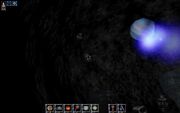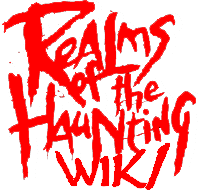The Wheel of Time (abbreviated by fans to WoT) is a series of epic fantasy novels written by Robert Jordan, nom de plume of late American author James Oliver Rigney, Jr. Originally planned as a six-book series, it now consists of eleven published novels, with one more upcoming. There is also a prequel novel and a companion book available. The author began writing the first volume, The Eye of the World, in 1984 and it was published in February 1990. The author passed away while working on the final volume, which will now be completed by fellow author Brandon Sanderson for publication in late 2009. The series draws on elements of European and Asian mythology, most notably the recursive nature of time found in Hinduism and Buddhism and the concepts of balance, duality and a respect for nature found in Taoism. The series was also partly inspired by Leo Tolstoy's War and Peace.
The series is notable for its length, its detailed imaginary world, its well-developed magic system and a large cast of characters. The eighth through eleventh books each reached #1 on the New York Times bestseller list. As of 12 August 2008 the series has sold over 44 million copies worldwide and has spawned a computer game, roleplaying game and a soundtrack album. The television and film rights to the series have been optioned several times, most recently by Universal Studios.
Similarities[]
There are several similarities between features of The Wheel of Time and Realms of the Haunting[1], leading to the assumption that the work by Robert Jordan may have had some inspiring influence on members of the production team of ROTH. These instances of resemblance shall be elaborated on in the following passages.
As suggested by GOG Forum user Lafazar, Adam's surname, Randall, could be a subtle allusion to the main character Rand al'Thor in the Wheel of Time series. Similar to Adam, Rand's palms have brands in the shape of a heron, marking him as a Dragon Reborn.[2]
Similar to the Shards and Seals in Realms of the Haunting, the Wheel of Time lore also subtly references the Seven Seals in the shape of the Great Seals.
The Tower & The Ways[]

The Ways (concept artwork by Sam Wood) © Wheel of Time wiki

The Tower in Realms of the Haunting
Upon closer examination, both the Tower and the Ire appear noticeably reminiscent of some aspects in The Wheel of Time books, precisely the so-called "Ways" and the "Machin Shin". According to the Ways article at Wheel of Time wiki, the Ways are "an area outside of reality," whose pathways are suspended platforms and bridges with the purpose of linking various so-called Islands which "are marked with large slabs of stone, labelled with Ogier Script, called Guidings." As such, they appear to have a similar function as the Kudurru monoliths in the Tower.
Initially, the Ways used to be a bright location filled with greenery, but during the War of the Hundred Years "the Ways began to grow dim [and] people began to avoid travelling the Ways, and some that did return came back mad, raving and screaming about Machin Shin, the Black Wind."[3] In the Tower, we find remnants of vegetation, and at some point, the Tower was tended to by a group known as Gardeners. The so-called "War of the Hundred Years" in the Wheel of Time books conjures up memories of the "Battle of the Stone" in Realms of the Haunting.
The Ways allow those who know the secret of traveling them to cover great distances in very short periods of time, and they are believed to have been created based on the study of 'Portal stones'. A portal stone is a now forgotten and obsolete means of travel, bound to one location and resistant to being moved. The portal stones are made of a gray stone and are three spans high and a full pace thick. They are covered top to bottom with deeply incised inscriptions and usually worn to an extreme degree.
Also, as Tower Gates are used to travel between various locations in Realms of the Haunting, similar devices exist in the universe of Wheel of Time, so-called Waygates. A waygate is a doorway carved out of stone; each Waygate has two Avendesora leaves on it, one on the outside and one on the inside. This makes it possible to lock waygates by putting both leaves on one side. When one moves the Avendesora leaf, the waygate turns to living plants and two doors swing open to reveal a smoky, mirror-like barrier, allowing access to an alternate dimension.
The Ire & Machin Shin[]

Machin Shin, as envisioned in the Wheel of Time video game © Significant Bits

The Ire
The Ire in Realms of the Haunting is the entity of death, forever doomed to wander the Tower and described as a dark cloud of phantoms and spirits which has the ability to trick, haunt and finally devour the unwary traveller. The voices of its many devoured and tortured souls can be heard while travelling the Tower. It is not clear when the Ire actually came to the Tower, but its advent marked the disappearance of the so-called Gardeners through either death or escape.
Unfortunately, I haven't yet delved into the Wheel of Time books myself, hence I shall quote from the more knowledgeable editors of the dedicated wiki,[4] in order to gain an impression of the Machin Shin:
| “ |
Machin Shin is an entity that resides in the Ways, who's name in the old tongue means "Black Wind." It kills, drains the victim's soul or drives insane, almost every living thing it comes in contact with, making it the reason why the Ways have now become unsafe to travel. The exact nature of Machin Shin is unknown, as are its origins. Even some time after the Ways began to darken after the War, travelers still passed through them safely for some time. It was not until the darkness began to deepen into blackness that individuals started to dissapear. Additionally, some who traveled the Ways arrived physically at their destination, but were mentally savaged. Some were seemingly dead, with no sign of mental function or a soul. Others were driven insane, terrified of the slightest breeze. Those capable of speech spoke of a "black wind" that now lived among the Ways. Eventually, all the mysterious disappearances in the Ways, and the harm that befell other travelers, were attributed to this black wind, Machin Shin. Machin Shin appears to be some sort of semi-sentient entity made up of darkness that flows like air. Survivors of encounters with Machin Shin tell of feeling a light breeze in the Ways preceding its arrival, easily noticed as there is normally no wind in the Ways. They also speak of hearing thousands of screaming voices, which might manifest as rambling monologue obsessed with blood, screams, violence and terror, such as "Plait the skin, scream your songs, sing your screams".. Some seem to hear the screams separately from the monologue. Padan Fain is the only being yet that was released by the wind after it was caught and Fain speaks about some voices greeting and some even fearing him. |
” |
In his article on the Wheel of Time video game,[5] Radek Koncewicz gives an interesting insight into how the Ways and the Machin Shin have been realised by the game's developers:
| “ |
The Ways are a series of stone walkways floating in a dark void that serve as shortcuts throughout the land. In one of the levels, the player character is forced to traverse them in order to pursue the antagonist. In the process, she encounters the Machin Shin. Staying within the Ways for an extended period of time summons this infinite wall of ghostly heads that scream and whisper as they approach. It’s a very striking event, and one of the most memorable parts of the game. If the “Black Wind” envelops the player character, the small amount of lighting in the level — including the Light Sphere Ter’angreal — is subdued as she is slowly killed. The Ways are also used as a clever framing device. The player must periodically exit the ways to avoid the Machin Shin, each time facing a new challenge. These mini-levels force the player to find a way to re-enter the gateway, or simply survive long enough for the the Machin Shin to recede. |
” |
References[]
- ↑ Acknowledgements go to youtube user Meisterdieb for pointing out these similarities in a comment on one of Dishtron's play-through videos of ROTH.
- ↑ Wheel of Time wiki entry on Rand al'Thor
- ↑ Ways article at Wheel of Time wiki
- ↑ The Machin Shin, as described in the Wheel of Time wiki
- ↑ Radek Koncewicz: Wheel of Time Bits
